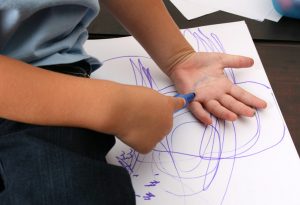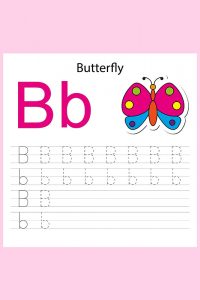Kids start their learning journey the moment they are born. First, they learn to adapt to their new surroundings, followed by making their body accustomed to intake of solid and liquid food items and then slowly progressing to learn the nuances of life such as crawling, walking, identifying things and people around them. While kids learn many things on their own, there are certain things which need to be taught to them.
When Can Your Toddler Start Learning to Write?

Your kid will take her first step towards writing by scribbling random things. Learning to write is not easy and your child will need a good amount of time to start understanding what she is writing or drawing. A child usually starts to understand the difference between drawing and writing by the age of three.
Teaching how to write requires a lot of patience on the part of the parents. Writing gets a boost once the kid starts talking and understanding the sounds and meaning of all the letters. There is no standard way on how to teach writing to preschoolers & toddlers, but the playschool will help the kid to fine-tune their writing skills and teach them how it is different from drawing.
How to Teach a Child to Write?

A school is equipped with trained teachers, who will teach the child how to draw and write once your kid begins schooling. However, even before your toddler starts formal schooling, you can give them a head start by teaching certain elementary basics about writing. Here are the different methods of how to teach a child to write letters:
- Do not teach how to write just because it’s necessary, make it fun:

No kid will start writing letters properly with a pencil or a crayon at once. They will start writing only when the colours and patterns amuse them. Start off by showing them how to make random signs by using slate and chalk or magnetic doodle pads. Another exciting way to get a toddler interested in writing is by using sand, salt or wheat flour to draw random signs and letters and encouraging them to follow.
2. Strengthen their palms:
Developing hand muscles is an important step in getting your child to write more and more. Playing with things such as clay or play-doh and holding different things with their hands will strengthen the hand muscles.
3. Ensure a good grip:
Give your child a pencil or a crayon which fits their palms comfortably, providing a good grip. This will make writing easy and also ensure that their handwriting is good. Using golf pencils will help.
4. Allow them to scribble:
Do not stop your kids from scribbling. Allow them to start scribbling as soon as they start holding items. Seeing things appear on a paper out of their hands will excite and encourage the child to scribble more. You can guide them on how to write their name, one letter at a time.
5. Show enthusiasm and excitement while they write:
Children tend to do things with greater enthusiasm when people around them are amused by what they do. Show excitement by laughing and clapping every time your child scribbles something. This will make them happy and encourage them to write more.
6. Make the margin lines more visible and evident:

If your child has a problem writing letters in between the margin lines, ensure that the lines are visible by highlighting and darkening them. Draw different multicoloured lines as start points for capital and small letters so that the child knows where to begin and end a capital letter and small letter.
7. Limit their interaction with devices such as mobile phones and tablets:

Digital tools are something that you should make your kid stay off from during the initial years. Getting hooked on mobile phones will make them lose interest in writing. Also, avoid teaching them how to write on a tablet. This will not allow them to develop proper grip and control with a pencil or a pen. Although our lifestyle today is dominated by technology and it is impossible to keep a child away from them completely, it is worthwhile to restrict their exposure to the digital enhancements.
8. Make your child write on top of letters written by you:

Tracing a letter will make it much easier for a child to learn the contours and curves of an alphabet. Write down a few alphabets and make your child write on top of them. Once they familiarize and get a hang of the letters, make them write without the pre-written letters.
9. Give them the freedom to write what they like and do not get worried if they write backwards:
Many children start writing backwards in the beginning. The best way to correct them is by getting a black slate with borders and marking the top left corner as the start point. This will ensure that they write in the correct direction. Also, do not restrict them from writing what they want as this will discourage and disinterest them from writing. Teach how to write the correct things slowly and step by step.
10. Teach them how to recognise letters:
The child will be able to write letters much more easily if they are able to identify, memorise and relate to them. Surround your kid with alphabet shapes in the form of magnets, puzzles and drawings. Spell out letters to them while pointing out to the respective letter. This will help them associate the letter with its sound, thereby fulfilling an important pre-requisite to learning how to write.
Kids are enthusiastic about learning new things and cling on to what they see, hear or do. Being patient is a pre-requisite when you are trying to teach your kid anything. They will have a short attention span and get distracted very easily. Understand that teaching them will take effort and time. Also, applying the correct methods of teaching how to write along with continuous monitoring of their progress is essential as any unchecked mistake will become a habit in the long run.
There are many different ideas and tools which will help you understand how to teach a child to write alphabets in easy and organized ways. You need not wait for formal schooling to start in order to teach your child how to write. These tips will help you get started even before the school does.









